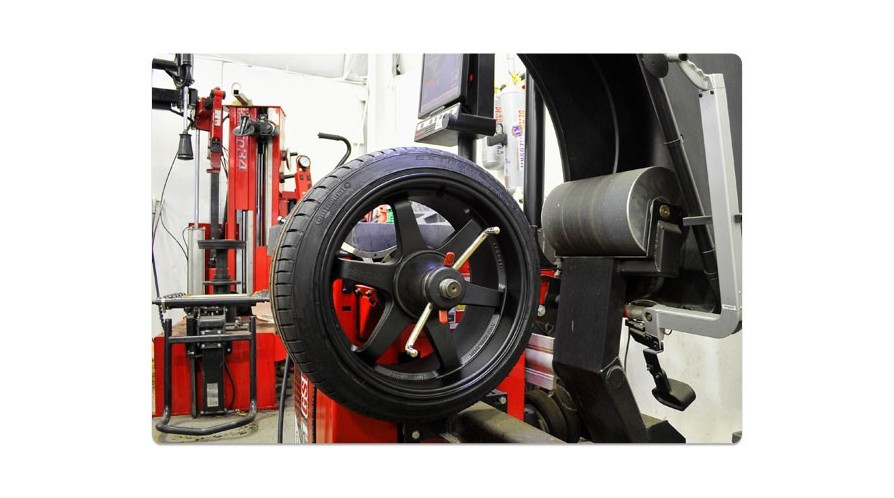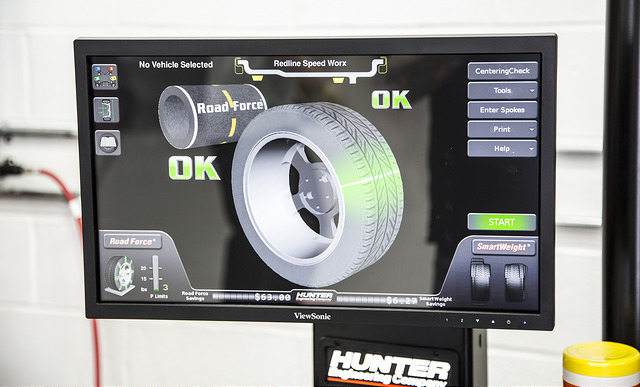
Road Force Optimization and Balancing
A brief overview of Road Force Optimization and Balancing as well as understanding the benefits of this over conventional wheel balancing
At 100 kilometers per hour, an average size tyre rotates 850 times per minute because of this even slight variations in wheel balance, sidewall stiffness or roundness of the tyre can cause the wheel to physically slam into the road surface 14 times every second.
Modern high-performance vehicles and SUVs with large tyres are extremely sensitive to wheel, tyre and surface feedback manifesting in poor ride quality and annoying vehicle vibration. Excessive wheel vibration can also result in accelerated tyre wear and damage to suspension and steering components.
Vehicle vibration can be caused by several factors including:
• Wheels out of balance
• Force variation
• Lateral and radial runout
• Incorrect tyre pressure
• Alignment out of specification
• Damaged or worn steering and suspension components
• Wheel to axle or hub mounting errors
• Brake component wear or failure
• Drive train or engine component wear or failure
Although tyre manufacturing is very precise with diligent quality controls some production inconsistencies in weight, stiffness and balance are inevitable. These inconsistencies manifest as low or high points in the tyre construction and create disruptive conditions during wheel rotation that we call lateral or radial runout. Tyres may also have an area that is stiffer than the rest of the tyre, this condition is called force variation.
Runout and force variation will cause noticeable vehicle vibrations. If you cannot achieve a smooth ride after balancing, it is possible that runout or force variation are the cause. Advanced wheel service processes called match mounting and road force balancing are needed to counteract these issues. These services require high specification equipment which comes at a far larger cost than standard balancing equipment and as such this service is not widely available.
The only way to rule out all wheel-related vibration is with a diagnostic wheel balancing system. We use the Hunter GSP9700 Vibration Control System which measures radial and lateral tyre forces and is able to provides solve ride and handling issues such as tyre pull and wheel vibration that normal wheel balancers that use only one plane of imbalance cannot detect. The Hunter GSP9700 is endorsed and used by most vehicle manufacturers as their standard for Tyre fitment on new vehicles.
We combine this cutting-edge balancer with the CenTor balancing plate that replicates the bolt pattern of each car to ensure that the wheel is located on the balancer in exactly the same way that it will be on the vehicle, thus eliminating the variations that can occur between balancing the wheel off car and the dynamics it displays when fitted.
The tyre industry used to be dominated by tall tyres where the distance from the wheel to the tread was large and relatively flexible. Most modern performance tyres have a much lower profile, meaning the sidewall is stiffer and the distance from the rim to the top of the tread is often much shorter. This means that minor imperfections will be amplified and more vibration transmitted into the car.
Diagnostic balancing is a sensible option when:
• Optimum ride quality is required from a high-performance vehicle with low profile tyres
• Large 4x4 tyres with greater potential for ‘force variation’ need to be optimised
• There is an ongoing vibration issue that has not been solved through multiple standard balancing attempts
Because diagnostic balancing is a time-consuming premium service and is charged accordingly it is not a service that every customer will require or be willing to pay for. We will gladly assess your vehicle at no cost and advise if diagnostic balancing will be appropriate.

